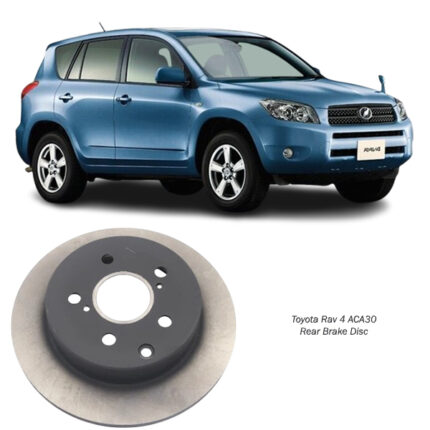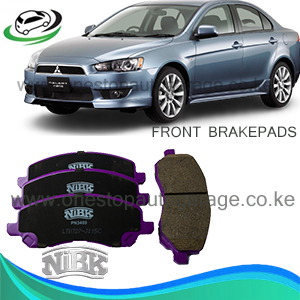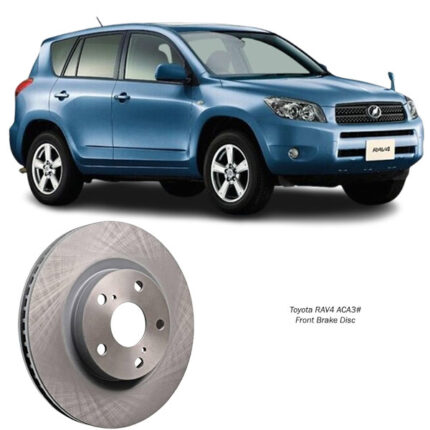-7%
Get Toyota RAV4 ACA3# Front Brake Disc Assy 43512-42050 in Kenya
The Front Brake Disc Assembly is a vital component of a vehicle’s braking system. It plays a crucial role in slowing down and stopping the vehicle efficiently. A properly functioning brake disc assembly ensures safety, performance, and driving comfort.
In this guide, we’ll cover everything you need to know about front brake disc assemblies, including their function, components, types, signs of wear, replacement process, and maintenance tips. By understanding these aspects, you can ensure a well-maintained braking system for a smooth and safe ride.
1. What is a Front Brake Disc Assembly?
The Front Brake Disc Assembly consists of the brake disc (rotor), brake caliper, brake pads, and related hardware. When you press the brake pedal, the brake pads clamp onto the spinning brake disc, creating friction that slows down the vehicle.
Main Functions of the Front Brake Disc Assembly:
Converts kinetic energy into heat energy to slow or stop the vehicle
Works with the brake calipers and pads for efficient braking
Ensures smooth and stable braking performance
Prevents excessive heat buildup with proper ventilation
Because front brakes handle most of the braking force (around 70-80%), the front brake disc assembly must always be in optimal condition.
2. Components of a Front Brake Disc Assembly
A typical front brake disc assembly consists of several parts that work together to ensure effective braking:
Brake Disc (Rotor) – The rotating metal disc that the brake pads clamp onto to stop the vehicle.
Brake Caliper – Houses the brake pads and pistons, applying force to the disc when braking.
Brake Pads – Friction material that presses against the disc to slow the vehicle.
Brake Caliper Bracket – Secures the caliper to the vehicle’s suspension.
Brake Hoses & Lines – Deliver hydraulic brake fluid to the calipers for braking force.
Wheel Hub Assembly – The hub connects the brake disc to the wheel and allows it to rotate.
Each component must be in good condition for consistent and reliable braking performance.
3. Types of Front Brake Discs
Brake discs come in different types based on design, material, and performance capabilities:
Solid Brake Discs
Basic design, found in smaller or economy cars
Simple and cost-effective
Suitable for light braking needs
Vented Brake Discs
Designed with internal vents for better heat dissipation
Common in modern passenger cars
Reduces brake fade and improves braking consistency
Slotted Brake Discs
Features grooves on the surface for improved heat dissipation
Enhances braking performance in high-speed or performance driving
Removes brake dust and water for better contact
Drilled Brake Discs
Holes drilled into the rotor to reduce heat and weight
Common in high-performance and racing vehicles
Can wear out faster due to structural weakness
Carbon-Ceramic Brake Discs
Extremely durable and heat-resistant
Found in sports and luxury vehicles
Expensive but offers superior performance
The right type of brake disc depends on your driving style, vehicle type, and braking requirements.
4. Signs of Worn or Damaged Brake Discs
Brake discs wear down over time due to friction, heat, and environmental conditions. Watch for these warning signs:
Vibrations or Pulsation in the Brake Pedal – Warped brake discs can cause uneven braking.
Squealing or Grinding Noises – Worn-out brake pads or damaged discs can produce noise.
Longer Braking Distance – Reduced braking efficiency due to disc wear.
Visible Cracks or Scoring – Deep grooves, cracks, or uneven wear on the brake disc.
Brake Warning Light – Some vehicles have sensors that detect brake issues.
Ignoring these signs can lead to reduced braking performance, increased stopping distance, and safety hazards.
5. How to Replace a Front Brake Disc Assembly
Replacing a front brake disc assembly requires mechanical skills and the right tools. Below is a step-by-step guide:
Tools Required:
Jack & Jack Stands
Lug Wrench
Ratchet & Socket Set
Brake Cleaner
Torque Wrench
C-Clamp or Brake Piston Tool
New Brake Discs & Pads
Step-by-Step Replacement Process:
Lift the Vehicle – Use a jack and jack stands to lift the front of the car securely.
Remove the Wheel – Use a lug wrench to take off the wheel for access to the brake system.
Remove the Brake Caliper & Pads – Unbolt the caliper and remove it carefully. Hang it using a wire to avoid stress on the brake hose.
Remove the Old Brake Disc – Unbolt and slide off the worn-out disc. If it’s stuck, gently tap with a rubber mallet.
Install the New Brake Disc – Align the new disc onto the wheel hub and secure it.
Reinstall the Caliper & Pads – Insert the new brake pads and reattach the caliper.
Tighten All Bolts – Use a torque wrench to ensure proper tightness.
Reinstall the Wheel & Lower the Vehicle – Secure the wheel and lower the car safely.
Pump the Brake Pedal – Press the brake pedal a few times to restore brake pressure.
Test Drive – Drive at low speed and test braking performance.
Safety Tip: Always use OEM-specified torque values when tightening bolts and ensure proper brake pad bedding.
6. Maintenance Tips for Longer Brake Disc Lifespan
Proper maintenance can extend the life of your brake discs and keep braking performance optimal:
Inspect Brake Discs Regularly – Check for wear, cracks, or scoring.
Replace Brake Pads Before They Wear Out Completely – Worn pads can damage the disc.
Use High-Quality Brake Components – Cheap parts can wear out quickly and reduce performance.
Brake Smoothly – Avoid aggressive braking, which causes excessive heat buildup.
Flush Brake Fluid Periodically – Old brake fluid can lead to poor braking efficiency.
Clean Brake Discs Regularly – Remove dirt, dust, and debris to prevent wear.
Following these tips ensures consistent braking, improved safety, and cost savings in the long run.
7. Importance of a Well-Maintained Brake Disc Assembly
A properly functioning front brake disc assembly is crucial for:
Safe Stopping Power – Reliable brakes prevent accidents.
Smooth Driving Experience – No vibrations, noises, or brake fade.
Cost Savings – Prevents expensive repairs due to neglected brakes.
Better Vehicle Performance – Enhances overall driving stability and control.
By keeping your brake system in top shape, you ensure safety for yourself, passengers, and other road users.
Follow us on Facebook for more parts.




